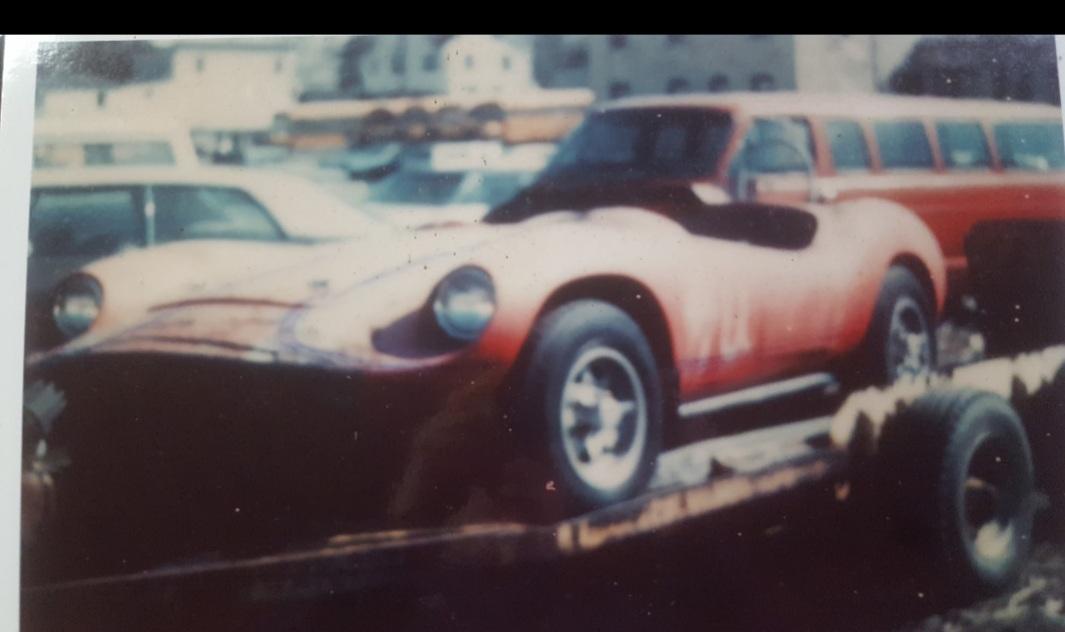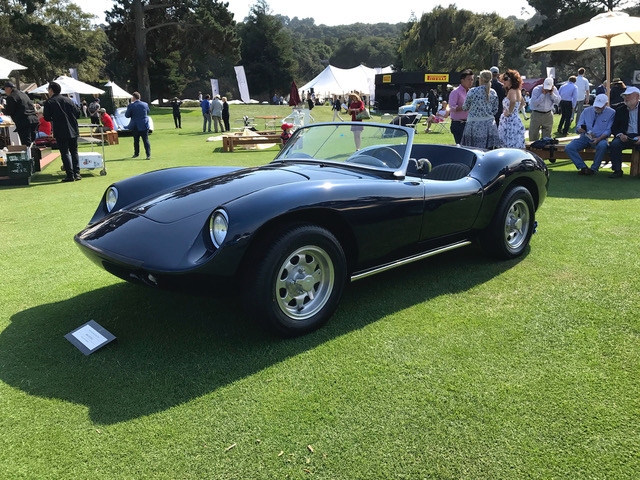Cars We Love & Who We Are #27
It just seemed too good to be true. The event, to be conducted at the NB Center for American Automotive Heritage in Allentown, PA in April of 2019 would pack three-days with a rich mix of high quality historic vehicle themed presentations, live activities and behind the wheel vintage vehicle driving events. Attendees would include curators from world renowned automotive museums, university professors focusing on historic preservation and keepers of the vintage automobile flame from around the globe. Objectives of the conference stood out as refreshingly simple, engage, teach, learn and have fun.
With the concept and execution polished over the prior two years this third year promised to bring to fruition the total experience organizers had envisioned. As a long time member of the Society of Automotive Historians I was eligible to attend. This third year would be special. However, just how special would be impossible to foresee.
The amazing Third (and final?) International Drive History Conference
Hagerty automotive heritage dream conference. Gone for good?

1910 Packard
A buzz of excitement built as attendees from both sides of the Atlantic filed through the NB Welcome Center better known as The Lodge. This handsome structure communicated a feeling of handcrafted rough hewn elegance. Constructed of stone and wood reclaimed from dismantled farm structures from the surrounding area, it embodied the preservationist character and philosophy that ran deep through the NB Center and in the heart of the host for this extraordinary gathering, Mr. Nikola Bulgari. Indeed, the NB in the NB Center’s name stands for Nikola Bulgari. He of the famous Bulgari Jewelry family.
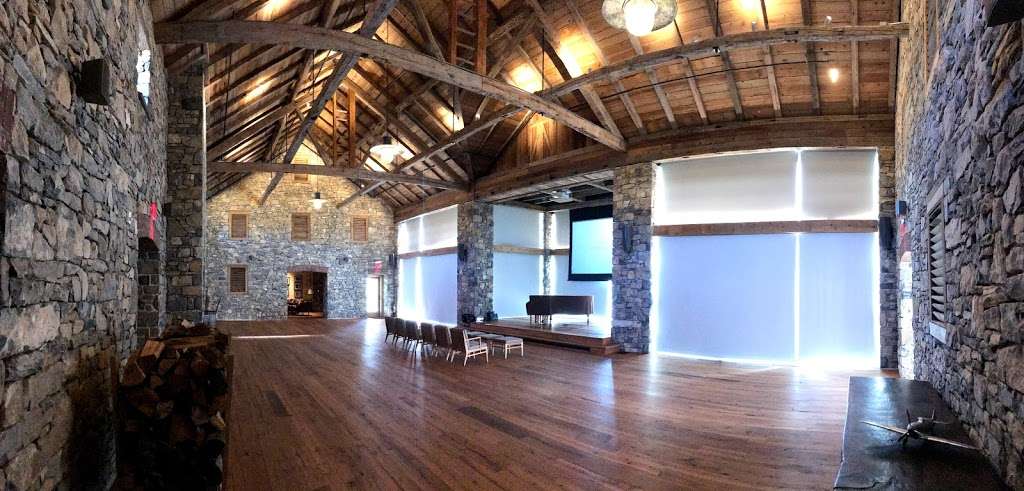
The Lodge
In 2017 Mr. Bulgari a passionate advocate for preservation of 20th century American automotive history, joined with the Hagerty supported Historic Vehicle Association, The Society of Automotive Historians and the College of Charleston to launch the International Drive History conference concept. For the conference site Mr. Bulgari generously provided the perfect home, his beautifully manicured 27-acre NB Center grounds. His facility included a dedicated track, fully restored drive-in theater and a campus that served as home to workshops capable of executing the highest level of restoration, fabrication and refurbishment. Only a few years back Mr. Bulgari had resurrected this property after it had languished for years as a trash strewn abandoned drive-in theater in Allentown, Pennsylvania. The story behind the NB center offers a wonderful tale of the magic that can be conjured at the intersection of serendipity, talent and passion. The International Conference concept, represents one of the many meaningful creations resulting from Mr. Bulgari’s preservationist vision. Mr. Bulgari’s vision extends to focusing the magnetic draw of the NB Center and his car collection as a powerful tool to promote fund raising events for worthy causes.
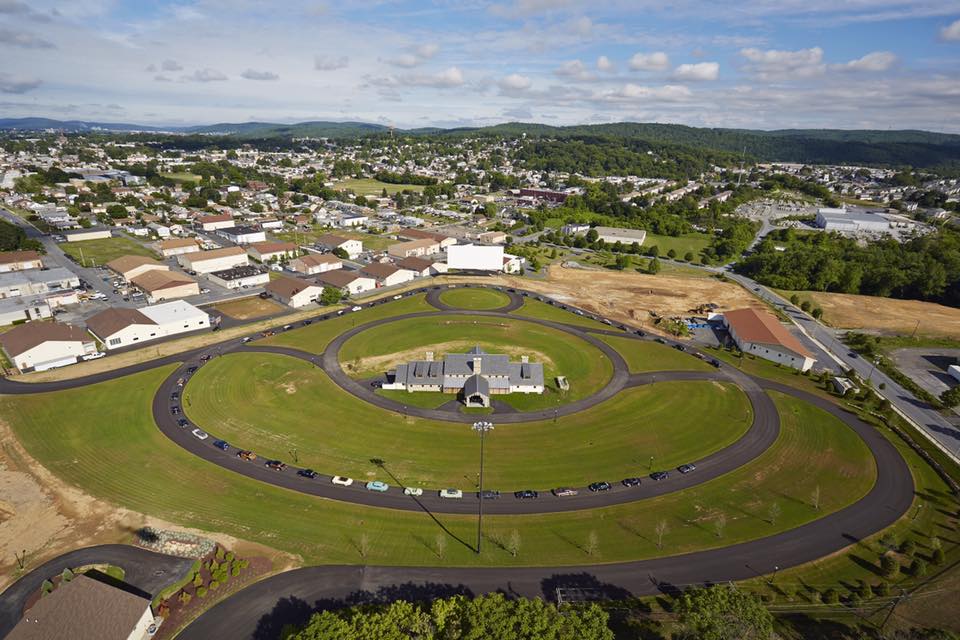
NB Center, 27 acres
Gathering for the welcome breakfast at the Historic Vehicle Association National Laboratory housed at the NB Center, attendees walked about among examples of the 24 (as 2019, more have been added since) culturally significant vehicles that had been recognized by their inclusion in the National Historic Vehicle Register. The Tucker Torpedo hand built prototype, Ferris Bueller’s faux Ferrari, the 1964 Shelby Cobra Daytona Coupe designed by Peter Brock, a 1918 Cadillac Type 57 (the only remaining passenger car that served in WWI in France), all represented the automotive history that the men and women in attendance work so hard to preserve and promote as fundamental to understanding the American automobile culture of the 20th Century. The wonderful story of the National Historic Vehicle Register will be featured in an upcoming Drivin’ News feature.
Mingling among the attendees making new acquaintances and rekindling old friendships strolled guest speakers Nicola Bulgari, Dr. Fred Simeone, Ed Welburn and McKeel Hagerty. A sample of presenters scheduled to speak on topics specific to vintage automobile history and preservation included senior representatives of The Henry Ford Museum, GM Design Center, Hemmings Motor News, National Corvette Museum, Indianapolis Motor speedway Museum, The Studebaker National Museum and professors from 10 colleges and universities including Stanford and Bucknell. An extraordinary wealth of knowledge all sharing a preservationist mindset filled the room. And then the fun began as attendees walked out into a sunny and brisk April morning.

Stephen Babinsky and 1910 Packard
There, cars from the 20th century dating from the early teens through the 1960s stood idling by the NB center’s driving track poised to begin the day for conference attendees in a most extraordinary way. Here, participants would have the opportunity to drive these beautifully restored time machines primarily sourced from the Bulgari Collection.While Mr. Bulgari is known to save his greatest fondness for Buicks, an affection that dates back to his childhood in post-WWII Italy, he has preserved a broad spectrum of 20th century American makes and models.
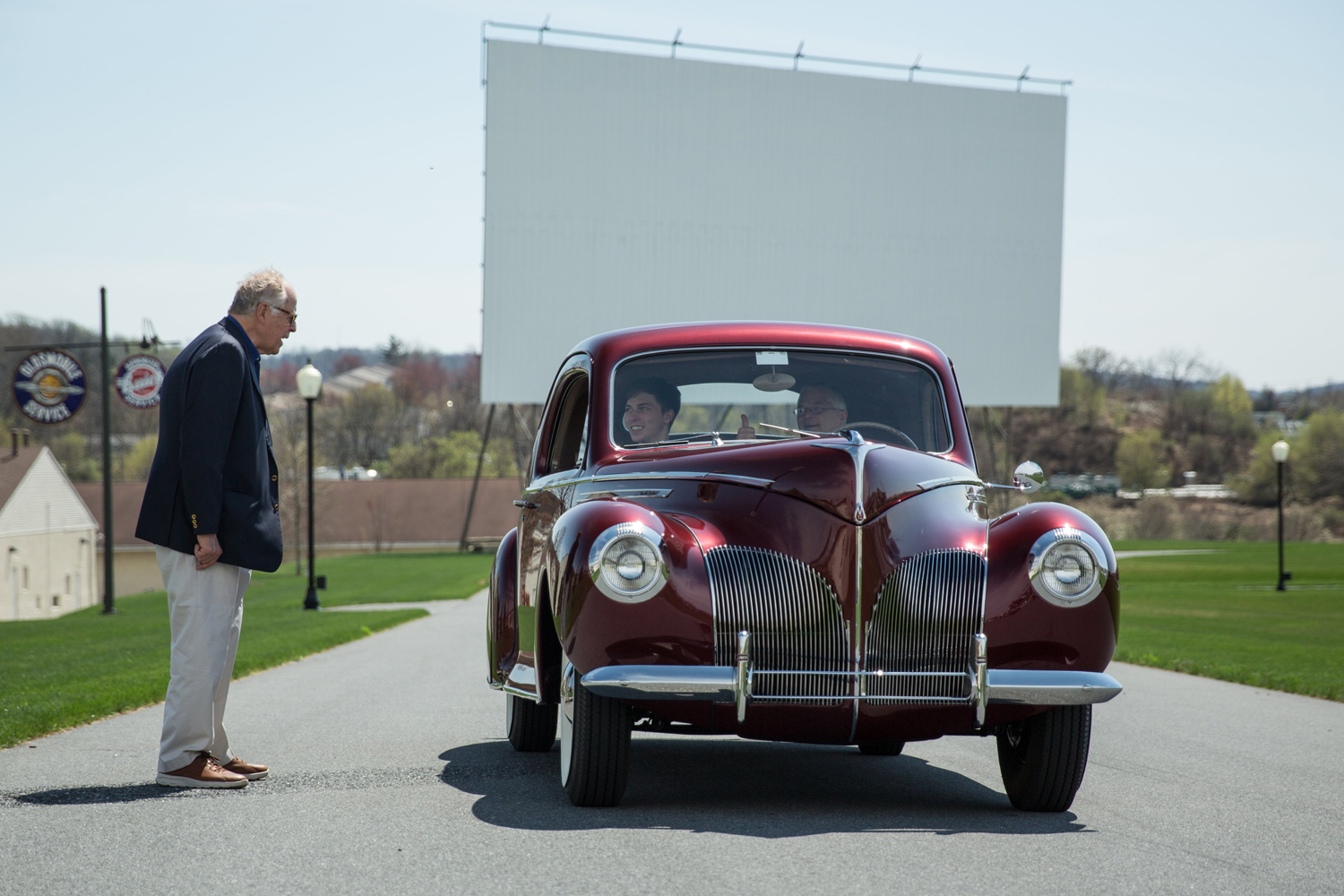
Mr. Bulgari cheering on happy drivers
In 2019 Bulgari’s Allentown Collection numbered around 150 vehicles, predominantly American cars from the 30s, 40s and 50s. Very possibly the most astounding aspect of his collection resides in the nature of the vehicles upon which he has bestowed his loving stewardship. His interest does not focus on the Olympian cars of the past such as Duesenbergs, Packards, Cadillacs and others favored by the wealthy. He knows they have their patrons and will be preserved. Mr. Bulgari has trained his attention on the everyday vehicles that populated the general public’s experience during their mid-20th century lives. He believes that preserving these once, but no longer, common place and affordable cars from yesteryear serves a critical role in understanding the profound
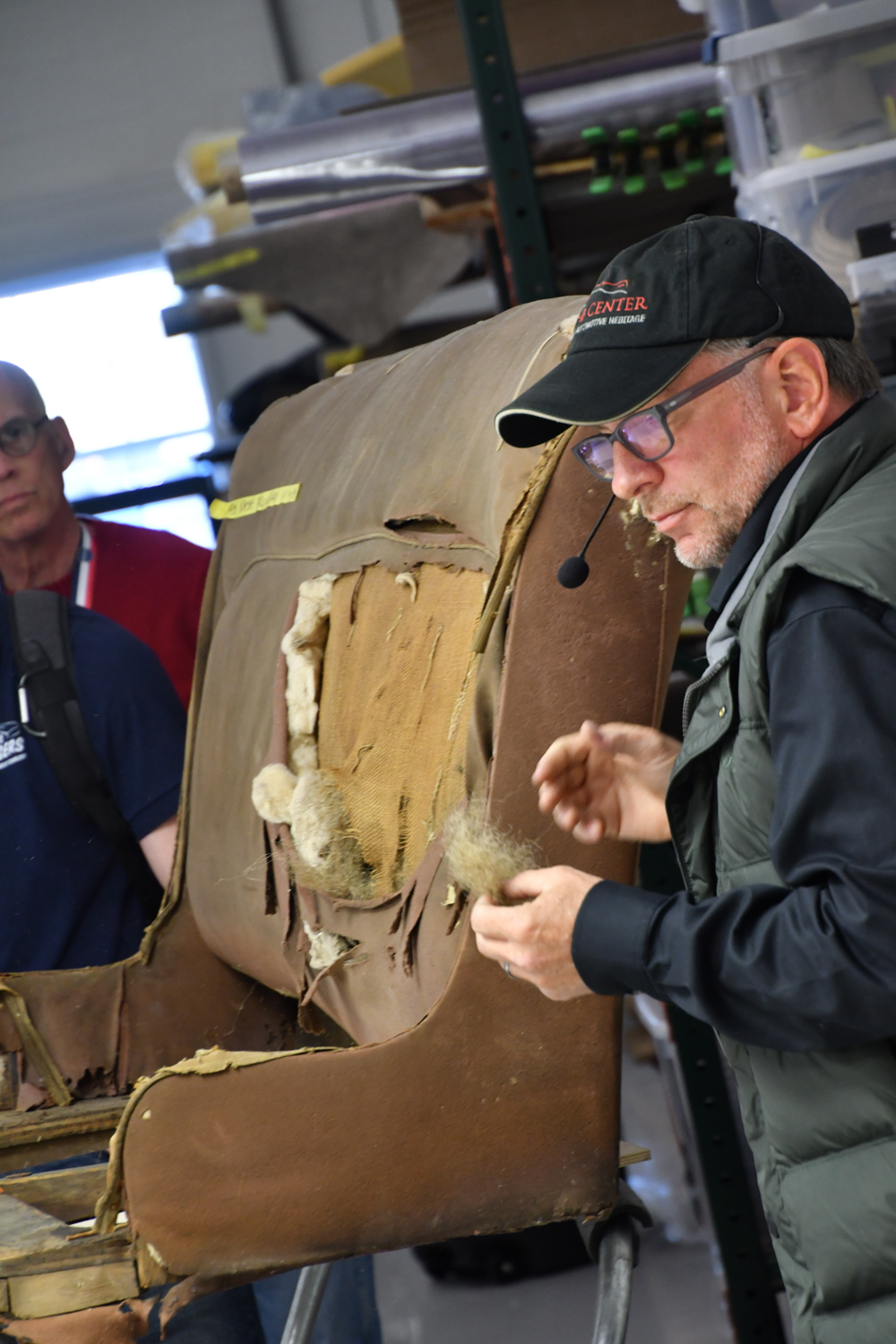
Keith Flickinger in upholstery shop
impact of the common place automobile on everyday American life of the period.
Stunning proof of Mr. Bulgari’s deep conviction to preserve these once common and now rare vehicles in their original condition evidences itself in the comprehensive restoration complex located at the NB Center. Every detail benefits from the highest quality restoration. For example, a 1940 Hudson with a value of roughly $40,000 for the best one in the world could receive a $200,000 restoration. This might entail finding a manufacturer somewhere in the world that could accurately replicate the original cloth covering the door panels. At the NB Center’s restoration campus money does not halt the pursuit of originality.
Fidelity to the original construction reigns supreme. As an example, the wood and joints in the roof of a 1934 Nash Brougham under restoration has to be a perfect match to the original even though, once covered by the headliner, the structure will never be seen.
Once restored, Bulgari’s cars benefit from constant monitoring, maintenance and track time. After being driven every car enjoys a thorough inspection. Periodically every engine has its oil subjected to testing for contaminants that would indicate unacceptable engine wear.

1917 Pierce-Arrow
It should be mentioned that the whole restoration operation benefits from the brilliant and personal oversight of two brothers, Keith and Kris Flickinger. Starting with Keith in 1995 both have earned Mr. Bulgari’s complete and total confidence. Both brothers possess the full spectrum of technical skills to carry out superior restorations and an easy communication style allowing them to educate visitors in a clear and entertaining fashion as to exactly what they and their roughly dozen elite craftsman do.
On this brisk April morning an array of meticulously restored vehicles awaited eager drivers lined up for pretty much a once in a lifetime opportunity. From a 1910 Packard Runabout, a
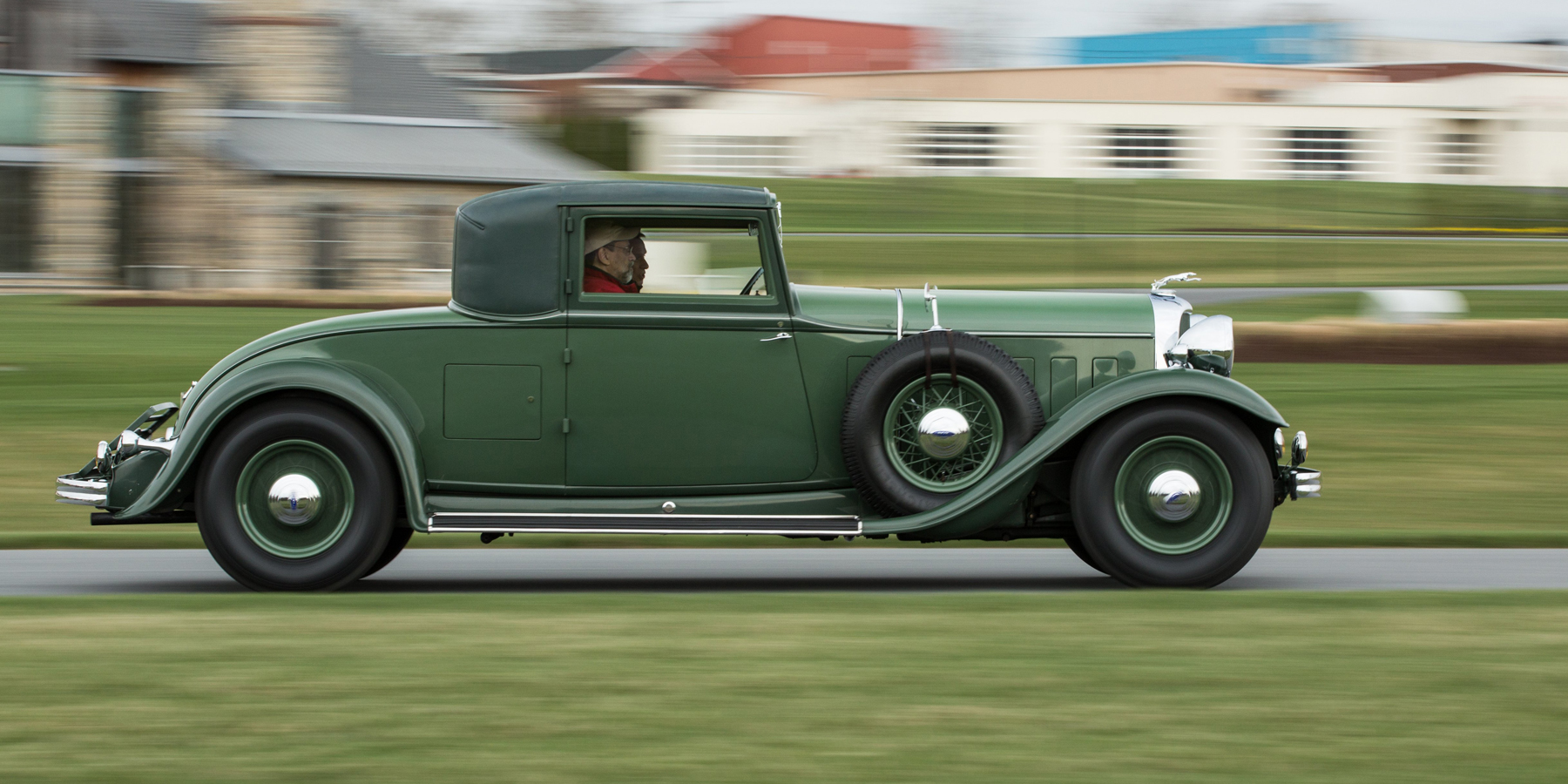
1929 Lincoln
1917 Pierce-Arrow, through a 1930 Lincoln, a 1936 Plymouth, a 1940 Buick convertible up through a 1950 Oldsmobile convertible and many others provided a visual banquet and a rolling and deliciously interactive automobile history lesson on the first half of the 20th century.
Leaving the driving experience behind, participants enjoyed strolling through the pristine Collection Buildings holding the immaculate vehicles comprising the Bulgari Collection. Over the next two days an information rich menu of presentations were offered on two parallel tracks from which participants could choose to tailor the conference offerings to their personal interests. Track one focused on Preservation and Conservation. Track two featured subjects specific to Documentation and Interpretation.
A sampling of topics included:
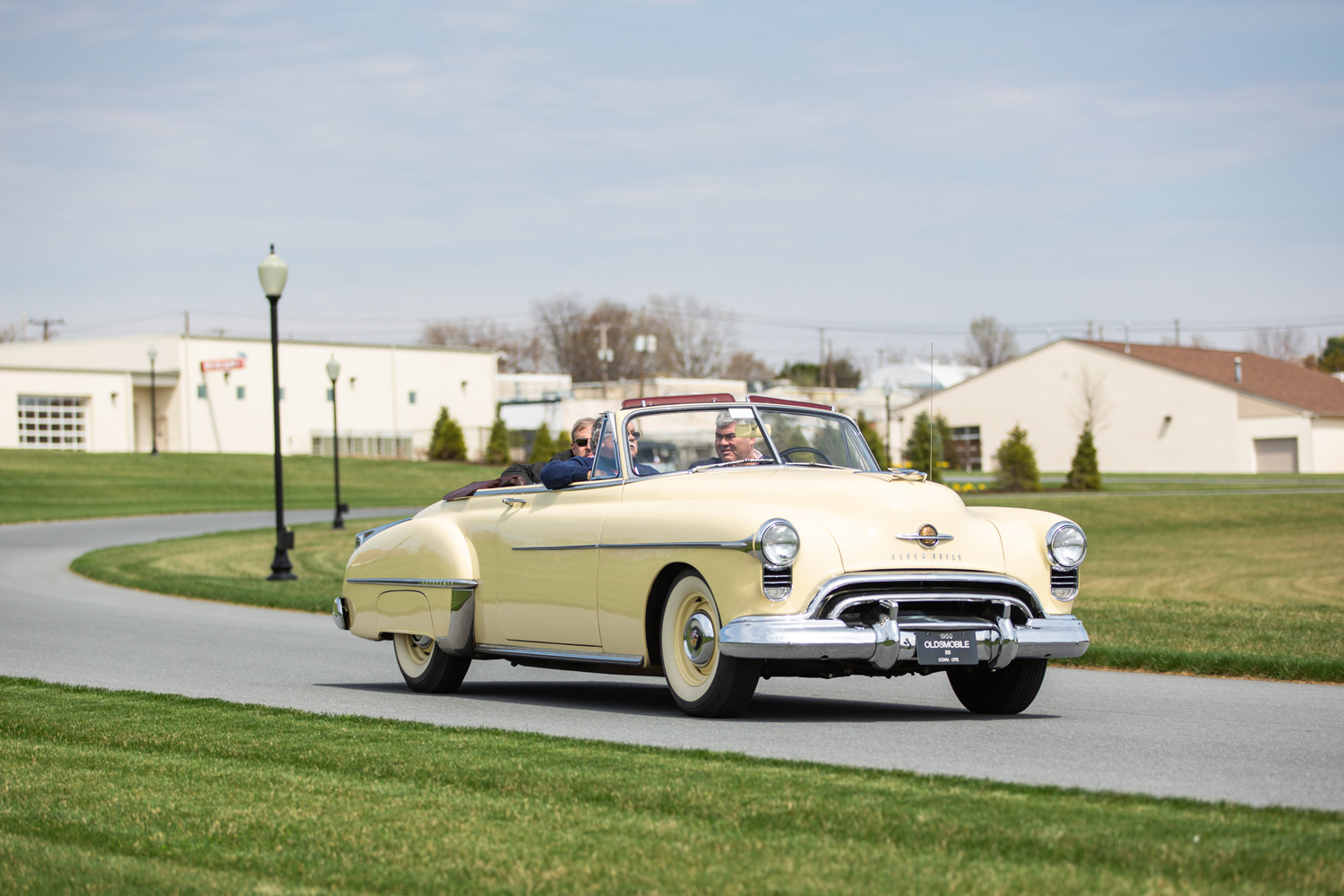
1950 Oldsmobile
- A round table discussion on Design, engineering and Performance with Mr. Bulgari, Dr. Fred Simeone founder of the Simeone Museum and Ed Welburn retired GM Vice President of Global Design.
- Diane Parker, Vice President of the Historic Vehicle Association presenting the Civil Rights story behind the inclusion of a 1966 VW Type 2 T1 Microbus in the National Historic Vehicle Register.
- Guest Speaker McKeel Hagerty
- Simeone and Jonathan Sierakowski explaining the intricacies of Vehicle Provenance: Investigation, verification, how and why.
- Preservation of the original Tucker
- GM Heritage Center Preservation Practices
- Interpreting the automobile in history- a group discussion featuring senior representatives from:
- The Henry Ford Museum
- National Corvette Museum
- Indianapolis Motor Speedway Museum
- Studebaker National Museum
- Boyertown Museum
The International Drive History Conference represented a glorious success on so many levels. Like minded and well informed car enthusiasts enjoyed a content rich environment within which they could meet and benefit from others in attendance.

LeSabre hot laps
Possibly the most striking experience in which I participated occurred after the end of the formal conference. Having lingered a bit, I made my way across the track to my car when I realized that a number of staff members and Mr. Bulgari had cars out on the track doing hot laps. Yes hot laps in a 1950s Nash-Healey, a 1955 Chrysler 300, and yes, the 1951 GM Le Sabre Concept Car among others. What glorious fun. Laughter, smiles, good vibes the smell of tortured tire treads and screaming vintage engines reclaiming the joy experienced decades ago. All present seemed imbued with an infectious innocence. And then Covid came to town. With it came cancellation of the 4th Conference in 2020. Much the same story cancelled years 2021 and 2022.
During this time of change Hagerty has been ensnared (possibly the choice of words betrays feelings of concern held by some in the classic car community for what has been the Hagerty gold standard) by the Wall Street SPAC financial engineers. Hagerty has gone public.
In researching this story I found that the HVA has subsequently gone away. It has been replaced by the Hagerty Driving Foundation (HDF). My hope falls into the “A rose by any other name smells as sweet” category.
That said, In researching the HDF site, I found no mention of the International Drive History Conference concept. I followed up on my concern with a respected and knowledgeable friend in the industry. Based on his remarks it seemed evident to me that I may have experienced the best and sadly the last International Drive History Conference. I hope I am mistaken.
A small but respected automobile enthusiast conference promoting learning, preservation and excellence should not be thrown aside. It deserves a place in the HDF business plan. Hagerty always seemed to get it. I hope HDF still draws from its Hagerty roots. I have no reason to believe otherwise, yet.

